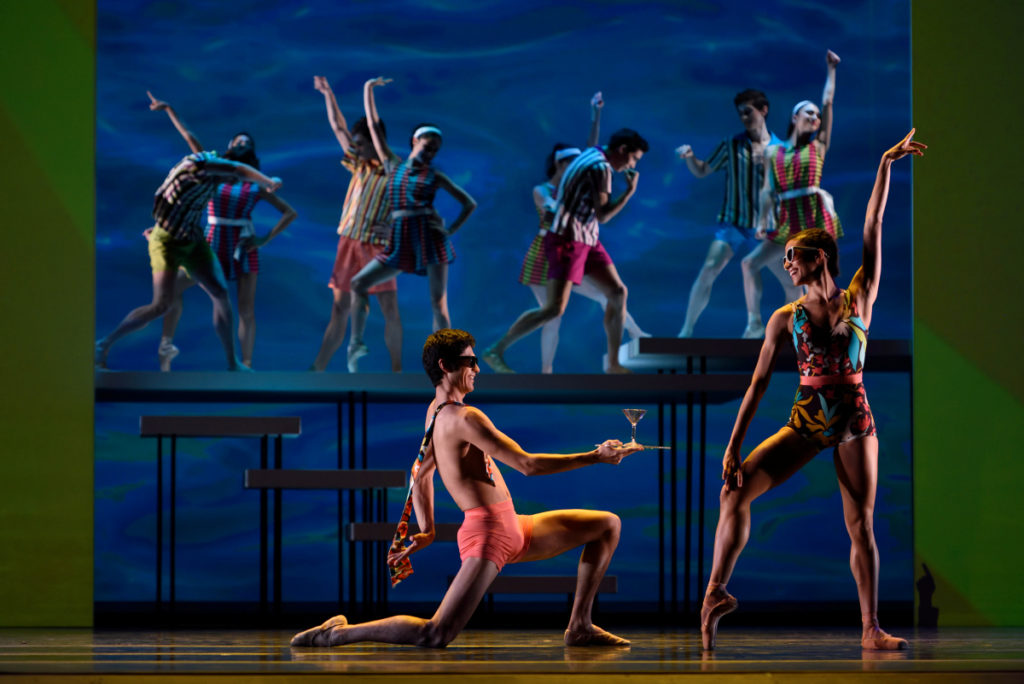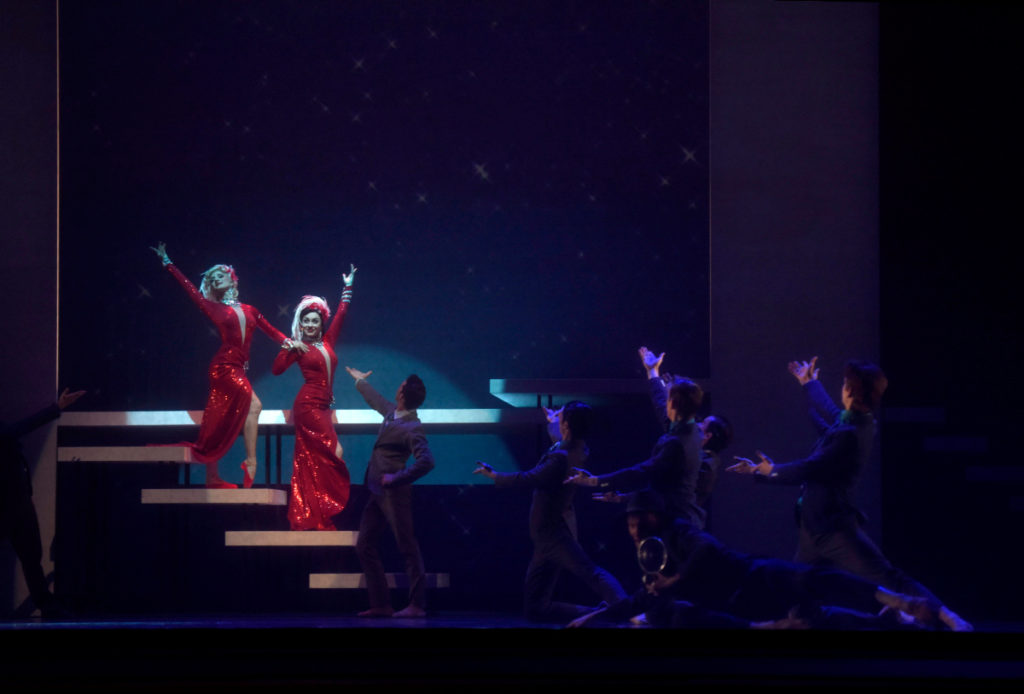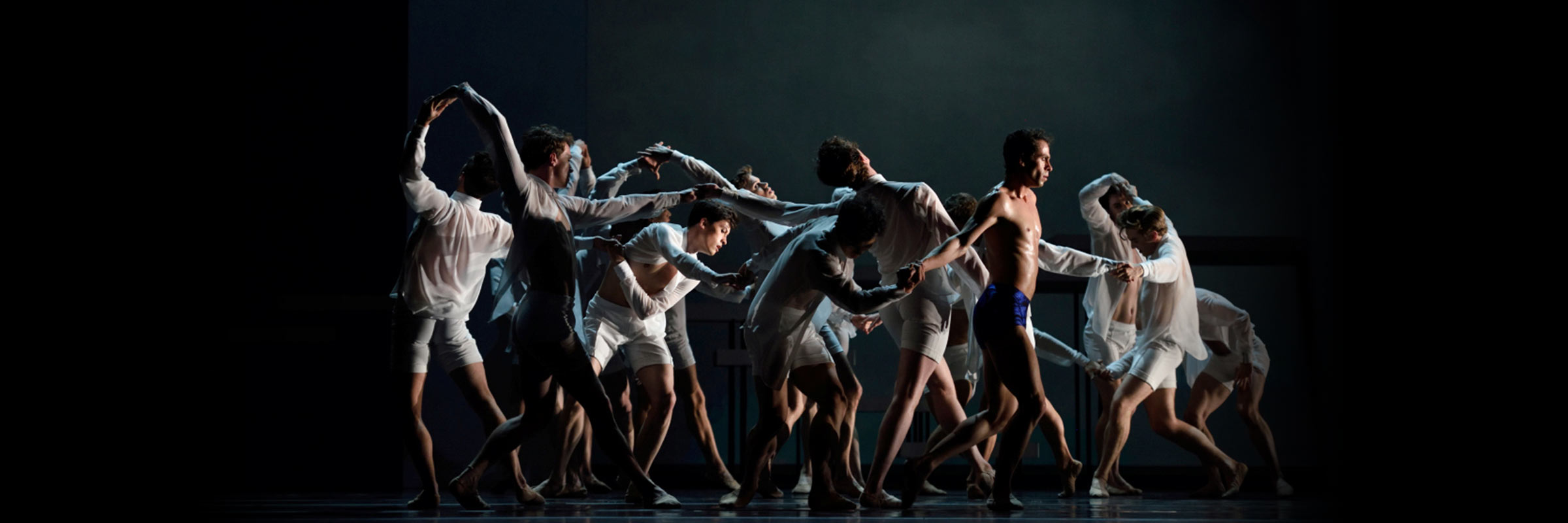About Possokhov’s Swimmer
An Odyssey through American Culture, Memory, and Beauty
Yuri Possokhov’s Swimmer was part of SF Ballet’s 2021 Digital Season. It was performed as part of Program 03, streamed March 4–24.
Choreographer in Residence Yuri Possokhov has an enviable memory, often a source of artistic inspiration. For Swimmer, his 12th repertory work for the Company, works of iconic American art that he discovered as a young man in the Soviet Union flesh out a ballet inspired by John Cheever’s short story The Swimmer. Literature, film, fine art, and music intersect in a ballet that’s about American culture, memory, and, most of all, beauty.
Possokhov is a great consumer of culture; the works that provide content and subtext in Swimmer are things that “stuck [with me] so many years, I can’t get out from them,” he says. “They hooked me.” Cheever, Jack London, J.D. Salinger, Vladimir Nabokov, Edward Hopper, and Mike Nichols—all of them, by virtue of their art, have a presence in Swimmer. The ballet, Possokhov says, presents his images of these works, linked by the concepts embodied in Cheever’s story and an orchestral score that incorporates four songs performed by Tom Waits.

Cheever’s The Swimmer is a surrealistic story of a man who “swims home” through his neighbors’ pools, only to find his own home—and his entire life—gone. Within the context of this idea of a man “swimming home,” Possokhov weaves together images, moments, and settings from Salinger’s Catcher in the Rye, London’s Martin Eden, Hopper’s Nighthawks, Nichols’ film The Graduate, and Nabokov’s Lolita. These works highlight what Possokhov loves most about American culture—the 1960s, in particular—from a non-American point of view. Scene changes happen with the aid of film sequences, which reflect Possokhov’s love of the art form and give a nod to Hollywood, another American icon.
Though Possokhov works from deeply personal experiences in creating his ballets, he likes to leave any interpretation to the viewers. Or the dancers. Principal Dancer Joseph Walsh, who dances the lead, says the existential struggle in Cheever’s story is “out of my wheelhouse in terms of experience.” For him, “it’s more like a matching game—in the section with all the little boys, this is literally about Yuri starting ballet, or about his kids, and it brings me back to when I was first starting ballet and my parents were waiting outside. And being left alone at the end—it’s the universal sadness.” Over the course of the ballet, Walsh says, “you go from this cookie-cutter version of yourself to this totally real version of yourself.”

One of the problems for Possokhov in envisioning what he wanted to do with Swimmer was finding the right music. The growled poetry of Tom Waits, Possokhov discovered, matched his concept. To link the songs and his own images, Possokhov turned to his collaborator on RakU, Shinji Eshima. Eshima’s music sets the ’60s tone early on, moving from lounge-y smoothness to an upbeat bop. Then he plunges the Swimmer—and the audience—into the water, creating a vivid sense of place as this lone man moves through a series of vistas. “Swimming has a certain pace, a certain rhythm,” Eshima says, and he drew on that in composing. A solo trumpet begins the ballet, “to represent the soul of one person. It’s both solo and a personal identity.” And it evokes “Taps”—a foreshadowing, because it’s London’s Martin Eden, which ends in death, that provides the ballet’s ending.
In the ballet’s last movement, we see the Swimmer multiplied in 15 men: “It’s him, all of them,” Possokhov says—one man’s emotions, magnified. The men dance with the fluidity and weightlessness that come with immersion in water, yet there’s ferocity too. “It’s like a kind of confession,” Possokhov says. That mad dance is a “last song, last scream, last swim,” he says. “It’s our scream.”
Then the men are washed away, leaving only the Swimmer onstage. At that point, Walsh says, “you go deeper and deeper. Those stories don’t end the same way, Lolita and all that—each of them is one strand; you’re delving into a circle of it happening again.” For him, the ending is ambiguous. “There’s never a resolution,” he says. “The music turns into this repetitive, beautiful melody and the projections are done. It’s just this lasting image.”
by Cheryl A. Ossola
Header Image: San Francisco Ballet in Possokhov’s Swimmer // © Erik Tomasson








